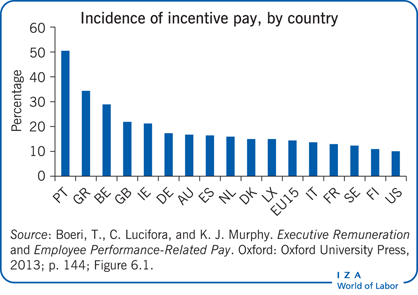Elevator pitch
Many firms offer employees a remuneration package that links pay to performance as a means of motivation. It also improves efficiency and reduces turnover and absenteeism. The effects on productivity depend on the type of scheme employed (individual or group performance) and its design (commissions, piece-rate or sharing schemes). Individual incentives demonstrate the largest effect, while group or team incentives are smaller in magnitude. The case for government intervention through tax breaks and other financial incentives is highly debated due to differences across firms and the potential for economic inefficiencies.

Key findings
Pros
Linking pay to performance increases workers’ motivation, effort, and loyalty to the company.
Incentive schemes work as a screening mechanism by encouraging only more productive workers to apply.
Performance-related pay can improve macroeconomic performance and the resilience of employment to economic shocks.
Incentive schemes support the allocation of high-quality workers to high-productivity firms.
Share-ownership schemes are associated with better firm performance in the longer-term.
Cons
Risk-averse workers may prefer flat-rate schemes to performance-related pay.
Explicit incentives may displace workers’ intrinsic motivation.
When rewards are paid for profits, but no penalty is incurred if losses are made, pay incentives may have perverse and counterproductive effects.
Performance-related pay may generate excessive work intensification and psychological stress.
Government intervention through tax breaks and financial incentives are not necessarily efficient.